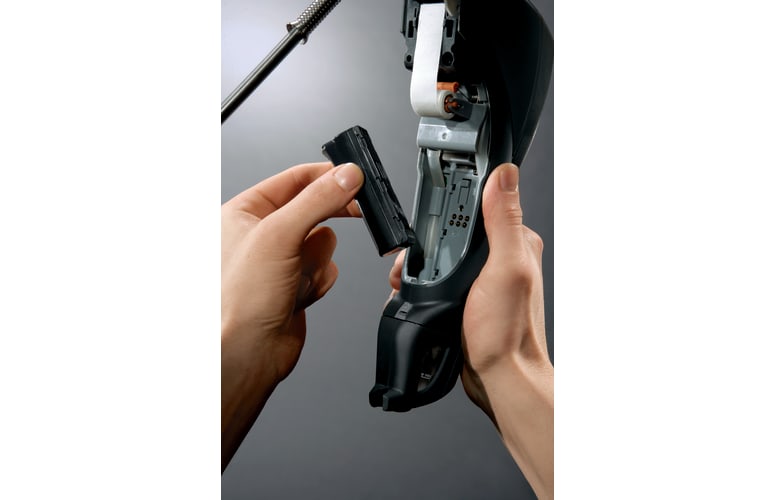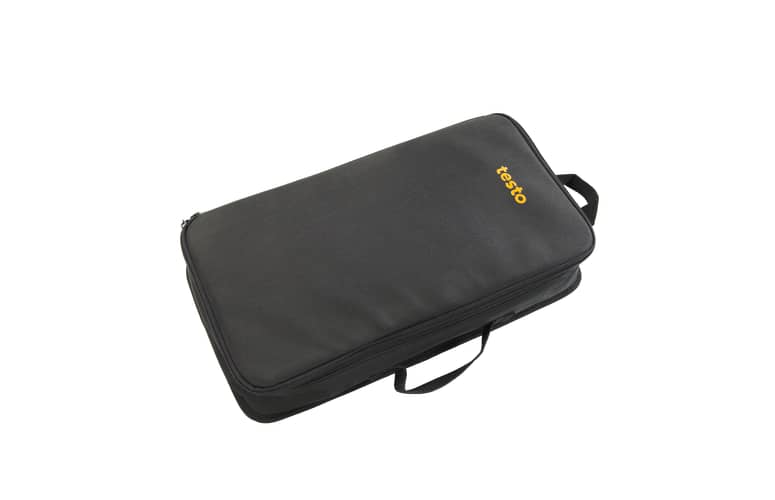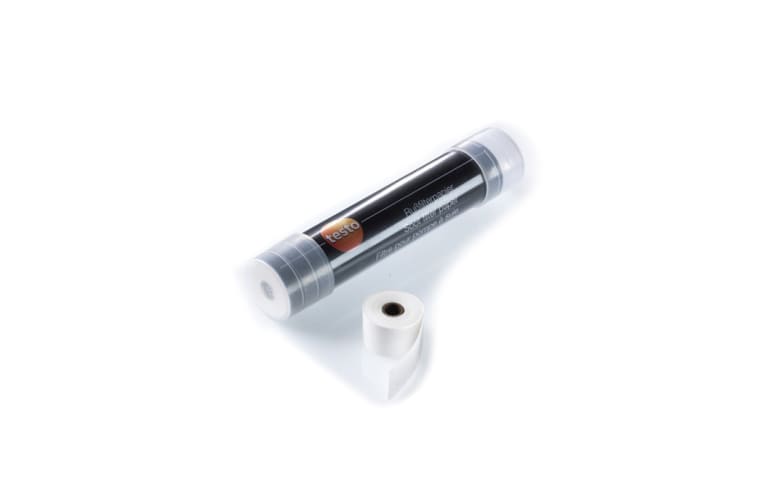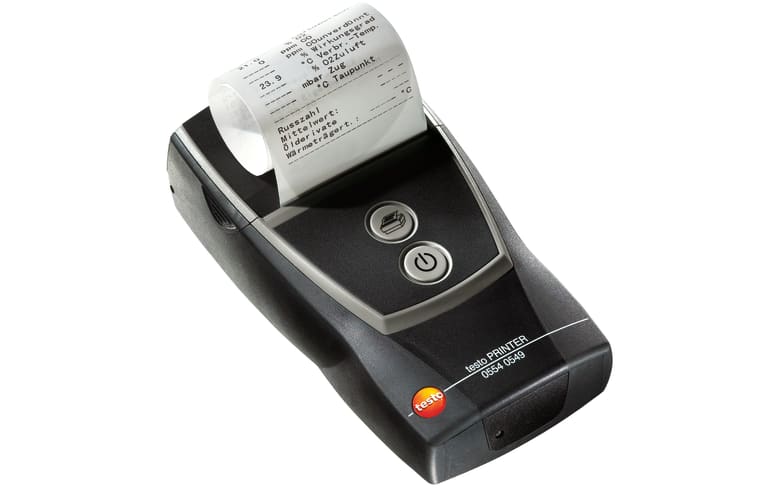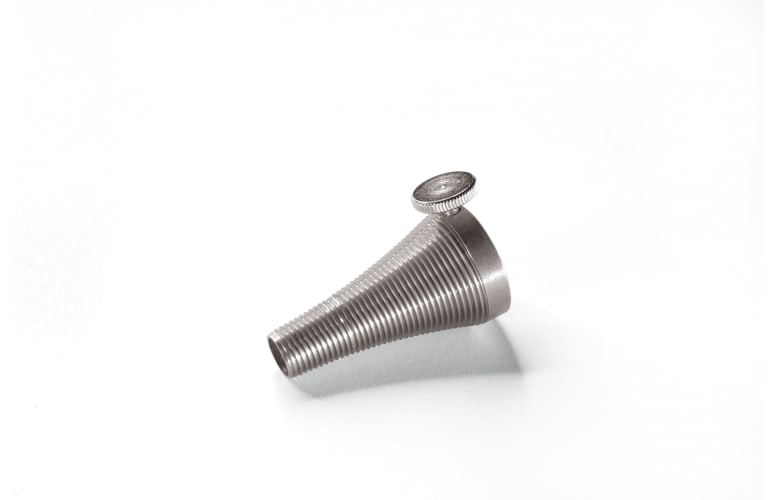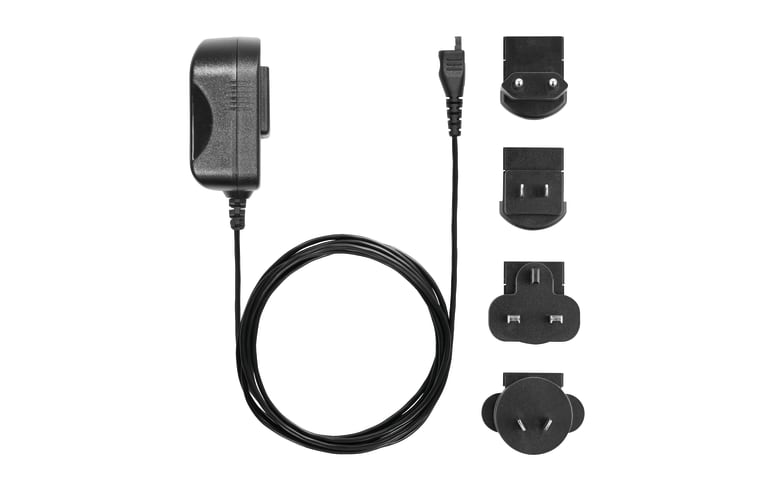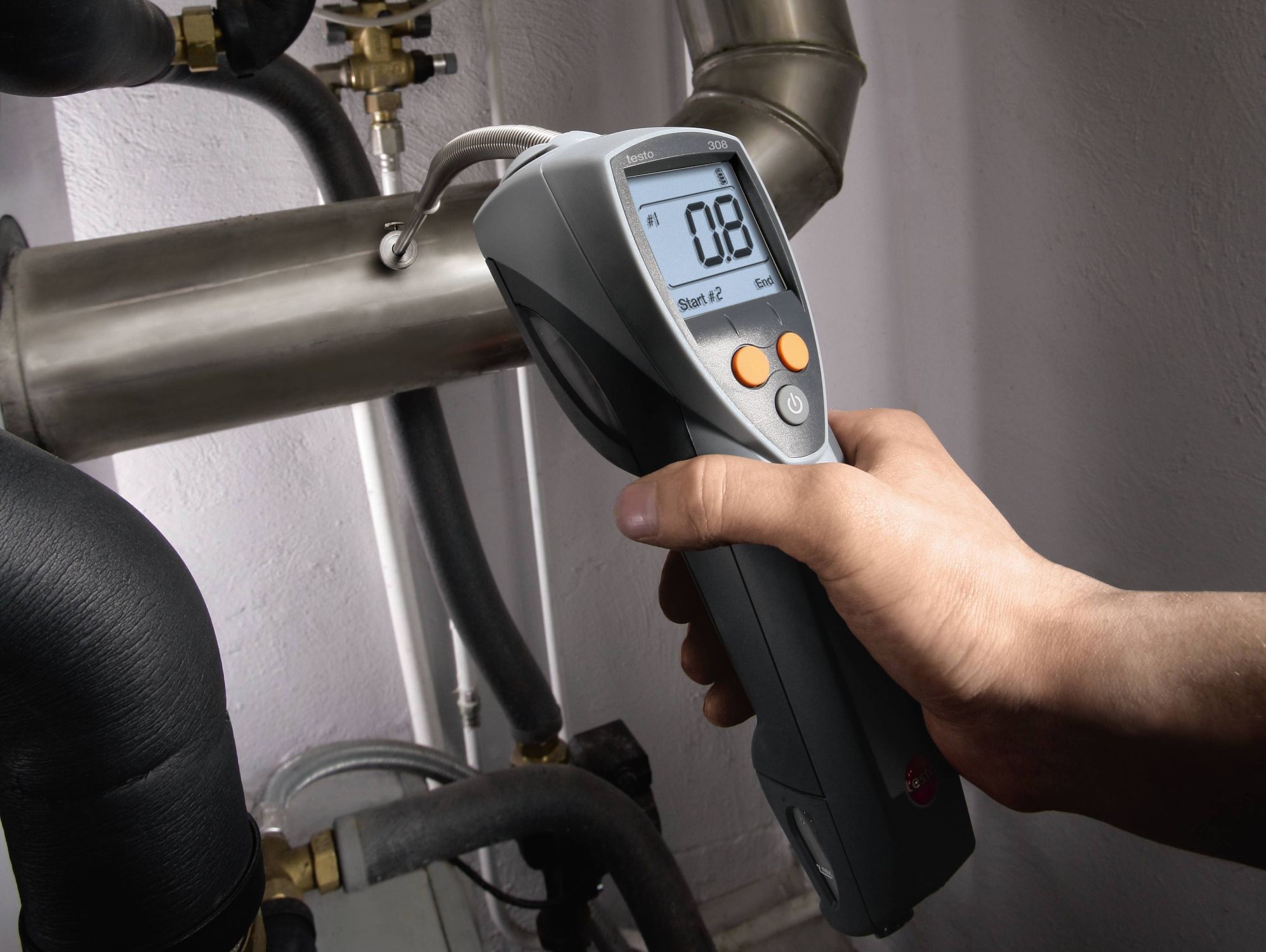There’s a rule that generally applies for all oil heating systems: the less soot there is, the better the combustion. That’s why soot count measurements are an integral part of the work carried out by heating engineers.
What your testo 308 smoke tester has to offer
Manual or semi-manual measurement systems are an extremely time-consuming and laborious method of determining the number of soot particles. Not only that, such measurements are often inaccurate and difficult to document too. The state-of-the-art testo 308 digital smoke meter can help you to solve not one, not two, but a whole bunch of problems in one fell swoop.
The testo 308 smoke meter measures the number of soot particles using the old manual method, the filter test. The difference that makes all the difference, however, is that this is performed fully automatically. The results are then presented as a digital reading on the tester’s backlit display providing you not only with extremely reliable readings, but saving you precious time too.
The optional testo turbo printer can be used to print out on site via the smoke tester’s infrared interface for quick and easy documentation.
